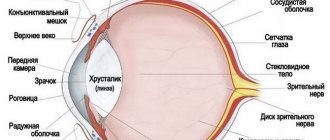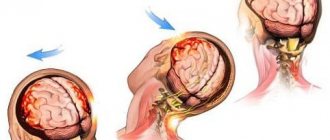In medicine, abdominal injuries are classified as common bodily injuries. In practice, there are open and closed injuries. One type of injury that does not compromise the integrity of the abdominal cavity is blunt abdominal trauma.
For this reason, similar injuries are called those that do not penetrate the walls of the peritoneum. But the fact that there were no penetrating wounds does not indicate that the condition of the internal organs remained completely intact.
Factors causing injury
Blunt abdominal trauma provokes bruise or rupture of the internal organs of the abdominal cavity. With visual integrity of the soft tissues of the peritoneum, this damage poses a great danger to the patient’s existence. This is due to the fact that it is impossible to notice signs of severe damage in time. Contusion of the abdominal cavity often leads to the formation of acute peritonitis and even hemorrhagic shock.
Closed abdominal injuries occur for a number of reasons:
- Road traffic accidents.
- Fall from height or catatrauma.
- Due to a targeted blow to the stomach or lumbar region.
- Compressing the body with two objects.
Most of the incidents listed above are characterized by the presence of a strong traumatic impact with the simultaneous appearance of several injuries at once. Very often, blunt abdominal injuries are combined with traumatic brain injury, fractures of the limbs, ribs, pelvis, injuries to various areas of the body, as well as a fracture of the spine. The general condition of the patient worsens significantly if he has several injuries at once; for the same reason, the risk of developing traumatic shock and the appearance of severe bleeding increases significantly.
Injuries with penetration of foreign objects
With open penetrating abdominal injuries, it often happens that a foreign object remains at the site of tissue rupture. These include various tools, reinforced concrete reinforcement, bladed weapons, bullets, nails, and other objects. In this case, the assistance algorithm changes.
First of all, the severity of the victim’s condition is assessed. If the patient’s situation is dire, first of all emergency care is provided, during which doctors are called. In other cases, calling medical personnel is the first stage of providing assistance to the victim.
If the patient has lost consciousness, he is placed on his back, his head is thrown back and turned to the side. In this position, free access is ensured, and vomit, in the event of a reflex urge, leaves the body without obstacles.
Removing a foreign body from the abdomen is strictly prohibited. Firstly, this increases bleeding. Secondly, during extraction, organ damage is possible, which will lead to the death of the victim. If possible, the foreign body can be trimmed a little so that it does not interfere with the transportation of the patient.
If the object stuck in the stomach is long, it is immobilized. This is done using a bandage or gauze. The object is carefully wrapped, and the ends are fixed around the victim’s torso. Before the ambulance arrives, the patient is covered with a warm blanket and his condition is monitored. Giving food and liquids to drink is prohibited.
If the injury is caused by a gunshot, you should pay attention to the presence of a bullet exit hole. If it is detected, an antiseptic bandage or compress is applied in this place, as well as on the inlet. If there are several bullet wounds, each one must be treated.
Classification
The classification of abdominal injuries is based on the characteristics of the injury; in traumatology, the following types of this injury are distinguished:
- Abdominal injuries in which trauma to internal organs does not occur. Such blunt abdominal injuries include contusions and tears to the abdominal muscles and fascia.
- Trauma with damage to the peritoneal organs - liver, spleen, ruptures of the large and small intestines, intra-abdominal rupture of the bladder.
- Blunt abdominal trauma with damage to organs located outside the abdominal cavity. This pathology includes damage to the pancreas, kidneys, bladder, trauma, as well as bruises with ruptures of the large intestine in one or more places.
- Trauma with intra-abdominal bleeding. These injuries can occur in case of damage to the spleen, liver, intestinal mesentery, and omental vessels.
- Damage in which there is a threat of further development of peritonitis. This includes injuries followed by rupture of hollow organs - the intestines and stomach.
- Injuries with simultaneous damage to parenchymal and hollow organs.
Blunt abdominal trauma occurs:
- Isolated. One organ was damaged; the patient did not have any other organs except the abdominal injury. The incidence of death with this type of pathology ranges from 5% to 20%. This depends on the depth of impact of the impact factor.
- Multiple. Simultaneous damage to several organs occurs.
- Combined. Several systems and organs are injured at once - the chest, the musculoskeletal system, as well as traumatic brain injury. The mortality rate for this type of injury is high - about 90%.
- Thoracoabdominal. Simultaneous damage to the diaphragm and abdominal organs.
- Combined. This damage is one of the most lethal options. In this case, blunt abdominal trauma is combined with chemical, temperature, and radiation injuries.
The first method of fixing organs when providing first aid for abdominal wounds
In a situation where internal organs have fallen out of a wound in the abdominal area, you should not even try to return them to their original position. If several internal organs have fallen out, it is recommended to move them as close to each other as possible so that they occupy a smaller area. Next, all organs are very carefully placed in a clean bag or piece of fabric, the edges of which are glued to the skin of the injured person using adhesive tape or adhesive tape.
The main thing in such a situation is to protect internal organs as much as possible from exposure to the external environment and protect them from possible damage.
Symptoms
Unlike an open abdominal injury, the victim of a blunt abdominal injury cannot really assess his position, since he is in a state of post-traumatic shock. He may not even feel pain.
If a combined injury occurs, the pain may be more acute from a fracture or bruise of another organ. A person may not complain or experience pain due to a reduction in the degree of pain sensitivity or clouding of consciousness.
This abdominal bruise is accompanied by the following symptoms:
- hematoma, scratches or abrasions;
- the tone of the abdominal muscles is visually noticeable;
- a change and dullness of the sound when tapping indicates internal bleeding of one of the abdominal organs;
- at the time of listening, one can discern contraction of the walls of hollow organs or other unnatural movements of the contents of the peritoneum;
- nausea, vomiting;
- urination with pain, blood in the urine;
- instability and transformation of stool, blood may appear in the stool;
- increased blood pressure;
- increase in heart rate.
The signs of blunt and open abdominal trauma are not very different; the symptoms of closed injury also depend on the injured organ.
- Liver damage causes severe pain and heavy bleeding. The victim indicates pain in the right hypochondrium radiating to the forearm. At the same time, the pressure decreases, the pulse becomes unstable, and the skin becomes pale. Possible loss of consciousness.
- Rupture or tear of the spleen. When a rupture occurs, retroperitoneal bleeding occurs. The patient reports pain on the left side. If the spleen is torn, the person, due to his normal condition, most often does not pay attention to subtle signs of injury for several days. For this reason, parents should pay closer attention if their child's abdomen is injured.
- Damage to the pancreas is detected by acute pain in the epigastric region with bloating and tension in the abdominal muscles.
- Kidney damage is determined by the color of the urine. Due to trauma in this area, urine has a red or rusty tint, and pain in the lower back also appears.
- Extraperitoneal ruptures of the bladder and ureters are manifested by swelling in the perineum and increased urge to urinate, pain in the lower abdomen and swelling.
Dangerous symptoms of abdominal injuries
Abdominal injuries can be fatal. Without medical care, death occurs quite quickly if the liver and spleen are damaged, or there are ruptures of the rectum and colon. For example, delaying surgery for 8-12 hours for a liver rupture increases the patient's likelihood of death by 4-5 times.
The liver and spleen are among the organs that act as blood depots. Not the entire blood supply circulates through the vascular system; at rest, its percentage can be only 45-50%. The remaining volume is stored in the organs and is used if the pressure in the vessels drops. This is why small losses of circulating blood do not affect your well-being and are not dangerous. In this case, damage to blood depots can very quickly lead to massive losses that cannot be compensated. If the liver (20% of all abdominal injuries) and spleen (30% of all injuries) are damaged, the following symptoms are observed:
- Strong pain.
- Pallor.
- Weakness, cold sweat.
- Loss of consciousness, fog.
- A sharp decrease in blood pressure.
- Increased heart rate, but it is difficult to palpate.
- Tachycardia.
- Vomiting without relief.
- Bloated belly.
First aid
If the victim is suspected of having a closed abdominal injury, then first aid is carried out according to the following algorithm:
- It is necessary to determine whether the person is conscious, check the pulse and breathing rates. If the latter are absent, cardiopulmonary resuscitation should be started immediately.
- Determine if the victim is vomiting. If the patient is unconscious, vomit may accumulate in the mouth. If it is present, the person must be laid on his side; if there is no vomiting, then on his back, and a cushion must be placed under his knees, with a cushion up to 15 cm high.
- Apply cold to your stomach. An ice pack wrapped in a towel is preferable, but you can use a simple heating pad with cold water.
Important! In case of abdominal injuries, under no circumstances should you: transport the victim yourself, allow him to sit down or rise to his feet, give him drink or food.
Brief first aid instructions
The main aspect of first aid for abdominal wounds is that the patient is strictly forbidden to give food and water, even in the situation if he asks for it. It is only allowed to wet his lips with clean water; if necessary, you can rinse your mouth, but the liquid should not be swallowed.
It is strictly forbidden to give a person painkillers; this should only be done by an emergency doctor.
First aid for abdominal wounds includes the following manipulations:
- The victim should be placed horizontally on a flat surface, legs bent at the knees. It is worth noting that if a person is fixed on a traumatic object, his position cannot be changed until the doctors arrive.
- If there is no traumatic element in the wound area, then it is necessary to stop the bleeding. If foreign objects are present, including those that have injured a person, it is strictly forbidden to remove them, as this may cause increased bleeding.
- A bandage is applied.
- The victim is wrapped in a blanket or warm clothes.
- If the person is conscious, then you need to talk to him before the ambulance arrives.
Diagnostics
If there are obvious symptoms of damage to internal organs, no special examination is carried out. Based on the clinical signs and circumstances of the injuries, a preliminary diagnosis is made, and the final one is established directly during surgery in order to eliminate the consequences of injury. This technique is necessary for more rational use of time and reducing the risk of death.
If the clinical picture is blurred, then ultrasound, radiography, CT or MRI are used. Ultrasound examination is used only for diagnosing the spleen and liver, and radiography determines exclusively indirect symptoms for the presence of free gases in the abdominal cavity.
Open abdominal wounds
People who can calmly tolerate the sight of someone else's blood and, in some cases, the sight of internal organs, can provide assistance with open (penetrating) abdominal wounds. First aid for an open wound in the abdomen is provided in the following order:
- If possible, the victim should be placed in a lying position. In cases where the victim is fixed on a traumatic instrument (for example, on the peaks of a sharp fence), it is strictly forbidden to remove it yourself! In this case, in addition to the ambulance, you need to call professional rescuers who will separate the traumatic object from the place where it was fixed.
- Try to stop the bleeding. It is impossible to remove foreign objects from the wound; this can lead to increased bleeding and additional damage to internal organs. You can only cover the foreign object with clean materials: a T-shirt, a bandage, tightly twisted cotton wool. If the wound is open and there is nothing in it, then it needs to be closed by applying a loose bandage or covered with a clean napkin. In cases where internal organs fall out of the wound, they should be covered with a clean (if possible sterile) cloth and bandaged with a layer of cotton wool. Trying to set prolapsed organs is prohibited, as the risk of infection or even further injury is very high!
- You cannot give water, food or painkillers to the victim.
- Before the ambulance arrives or when transporting yourself to a medical facility, you need to talk with the victim, reassure him, and try to bring him out of the state of shock. Often in this condition, victims may try to remove a foreign object from the wound or set prolapsed organs - this should be prohibited; if necessary, you can hold your hands.
- Transportation should be carried out in a lying position with legs raised or bent at the knees.
For a penetrating abdominal wound, first aid is provided only with clean hands. Rescuers should wash them with soap or a disinfectant solution and only then begin to stop the bleeding. Otherwise, infection may occur.
Treatment
A closed abdominal injury that does not cause damage to internal organs requires only conservative treatment. Severe injuries to the abdominal organs and complex episodes require urgent surgical intervention. During the operation, resection, suturing or removal of the organ occurs, as well as washing of the peritoneum.
Abdominal surgery is performed under general anesthesia with an incision in the abdominal cavity. The surgeon can see all the affected organs and their condition. After this, the specialist takes measures to restore their integrity.
The operation is accompanied by connecting the patient to an artificial respiration apparatus and procedures for blood transfusion or blood substitutes. After the operation, the patient may be given a drainage to flush the abdominal cavity and ensure free outflow of the resulting fluid. After the operation, the patient is prescribed antibiotics and painkillers.
The most commonly used analgesics are fentanyl and morphine. If there are no contraindications, then it is recommended to carry out epidural analgesia, tranquilizers are used - haloperidol, benzodiazepines, antibacterial agents, and transfusion and infusion therapy are also indicated.
Rehabilitation
If there are no complications, then complete recovery occurs within a month.
In the presence of acute complications, and especially peritonitis, the recovery period may be delayed for another month
During the recovery period after injury and surgery, any physical activity and consumption of dairy products, fatty and fried foods, and smoked foods should be avoided.
To relieve digestive disorders, it is necessary to systematically take pancreatic enzymes - Creon, Pancreatin, Mizim.












